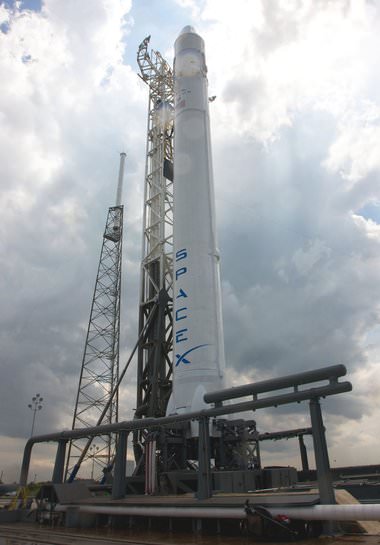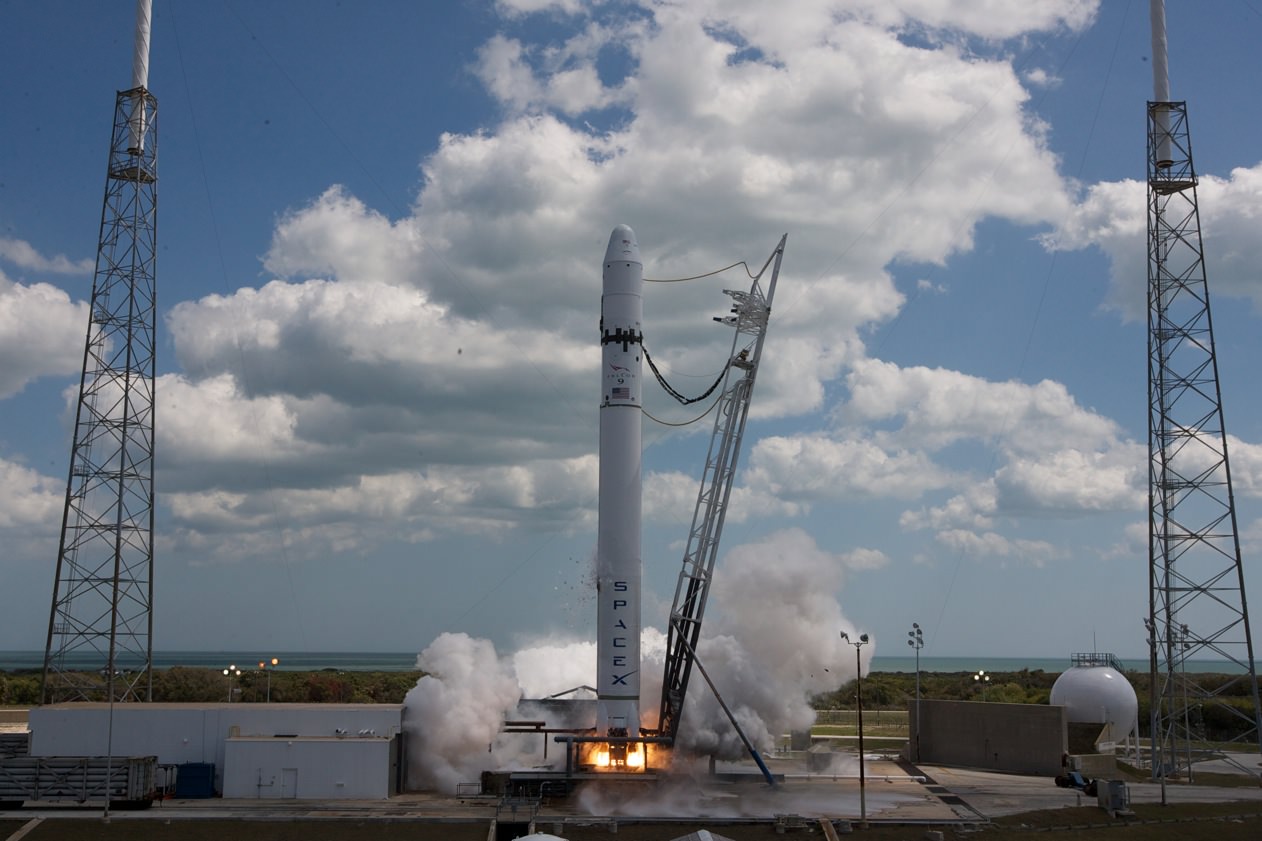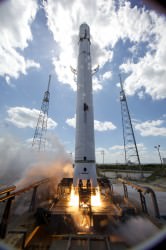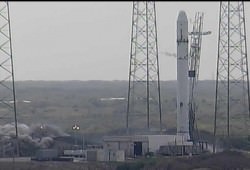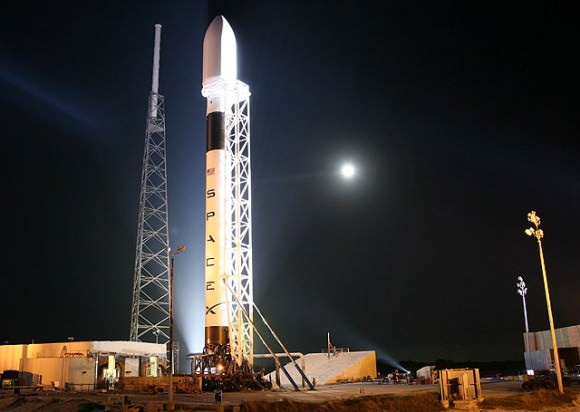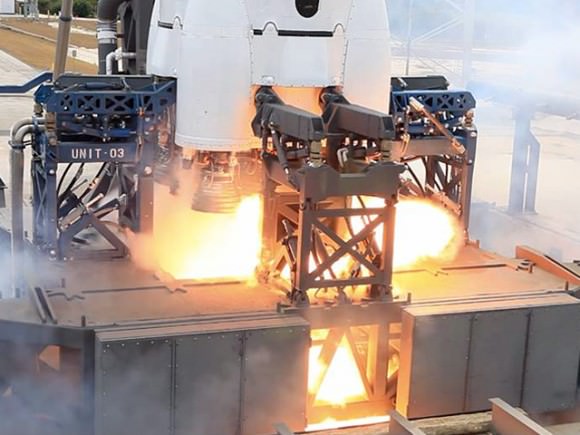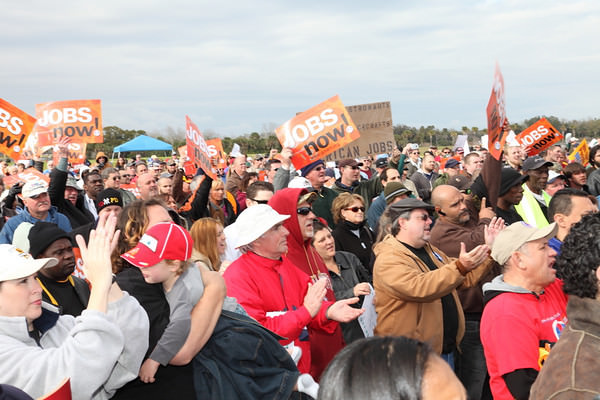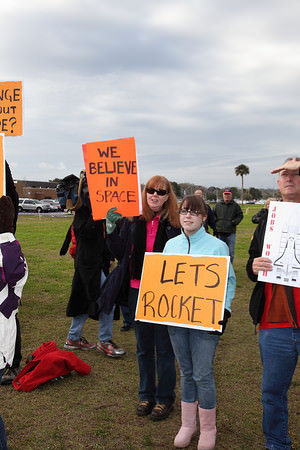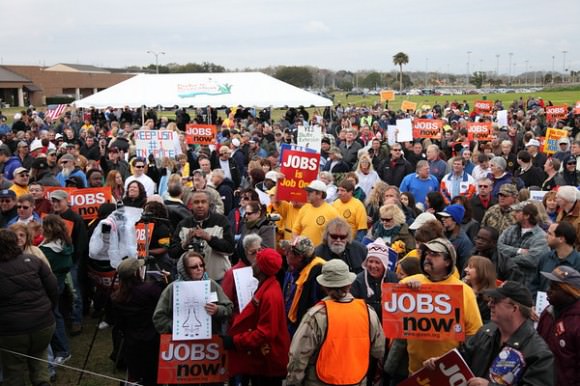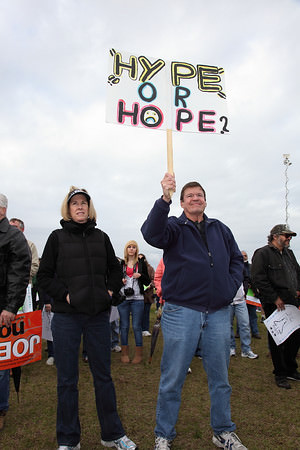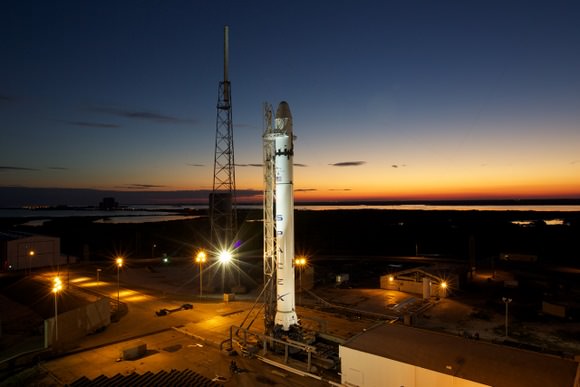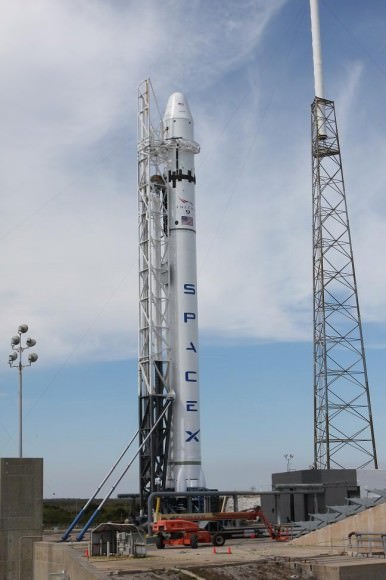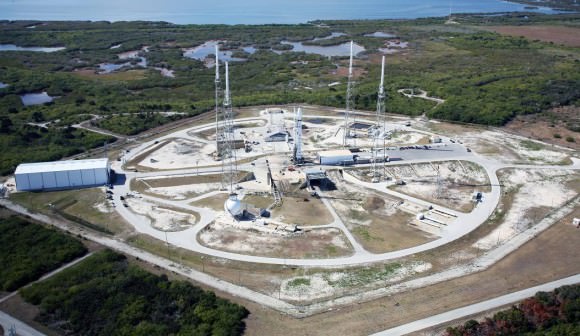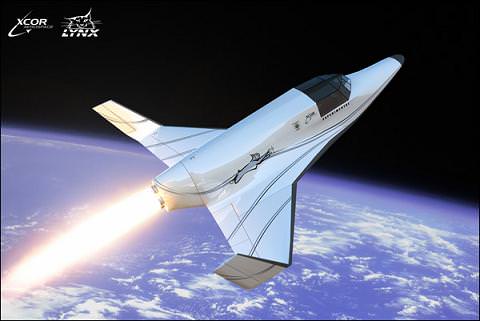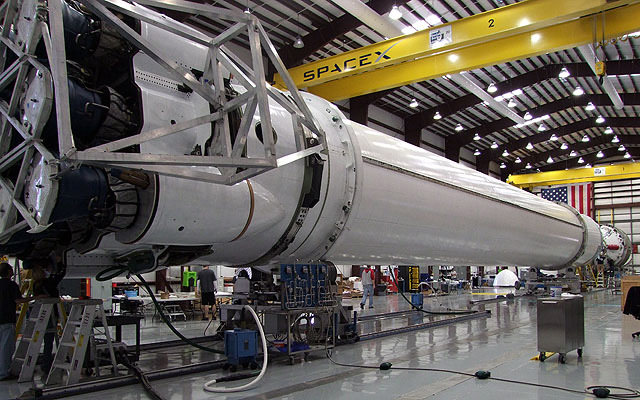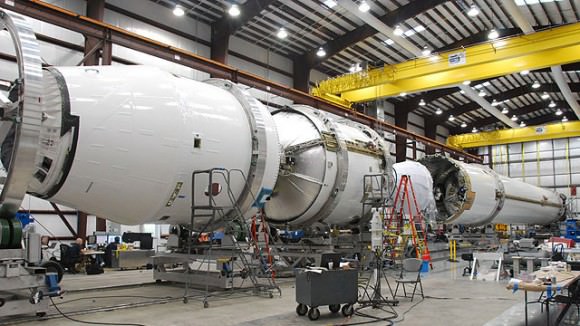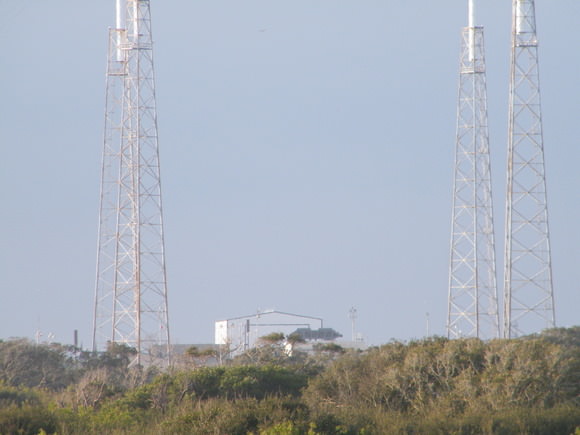[/caption]
The SpaceX Falcon 9 rocket sits poised on Cape Canaveral to begin a new era in space flight, as the company received their final clearance from the U.S. Air Force make their first launch attempt on Friday, June 4, 2010. The launch window is from 11 a.m. and 3 p.m. EDT (1500 and 1900 GMT) (a webcast will be available at this link). The commercial space company will send its two-stage 180-foot (55 meter)-high rocket to space, carrying a mock-up of their Dragon capsule, and if successful, will pave the way for cargo flights – and maybe even crewed flights — to the International Space Station for NASA.
Space Exploration Technologies’ CEO Elon Musk told reporters Thursday that the maiden flight probably has a 70 percent to 80 percent chance of succeeding.
“However, I should point out that is less than the probability of success in Russian roulette,” Musk said. “Remember that scene from ‘The Deer Hunter?’ That’s tomorrow. But not quite as likely.”
But, Musk added, “Everyone at this point feels pretty confident. There’s very little we can do to improve the rocket as far as reliability is concerned. We’ve done everything we could possibly think of.”
“There is a lot of anticipation by all the people here at SpaceX,” said Ken Bowersox, a former astronaut who flew in the space shuttle, and is now SpaceX’s vice president for astronaut safety and mission assurance. “It’s a really big launch for the company. We’re trying not to let that excitement and anticipation bias our judgment.”
The importance of this flight test is not lost on anyone at SpaceX or the space community, as NASA’s new plan rolled out by President Obama depends largely on the success of commercial space companies. The space shuttles are being retired and many wonder about NASA’s dependence on yet-untested commercial companies to ferry supplies and astronauts to space.
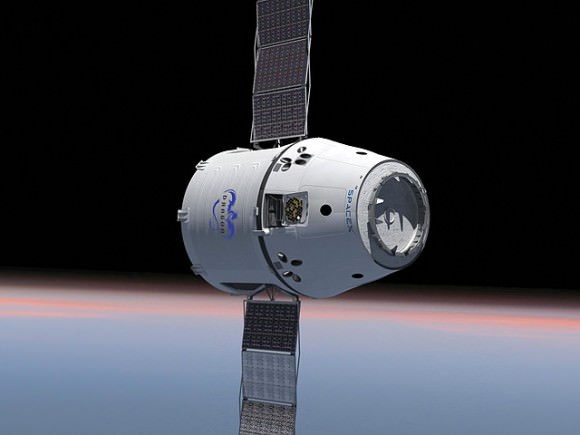
SpaceX has not provided many details about the flight path, but the rocket is hoped to climb to a 250 km (155 mile) -high circular orbit tilted at 34.5 degrees to the equator.
Musk said 100 percent success would mean reaching the planned orbit. “But I think given this is a test flight, whatever percentage of getting to orbit we achieve would still be considered a good day. I think even if we prove out just that the first stage functions correctly, that’s a good day for a test. That’s a great day if both stages work correctly.”
“If the vehicle lifts off the pad, no matter what the outcome is, we’re going to learn something that’s going to make the second flight more likely and the third flight and the fourth flight,” said Bowersox.
If all goes well, SpaceX plans to fly up to three Falcon 9/Dragon test missions for NASA, before starting cargo deliveries – maybe by next year — to the ISS, part of a $1.6 billion contract. The other company that NASA is depending on Orbital Sciences Corp, which plans to debut its Taurus 2 rocket in 2011. NASA has a $1.9 billion station resupply contract with that company.
SpaceX has launched smaller versions of the Falcon rocket, and it took four tries for the first success.
Forecasters say there is a 60 percent chance of good weather, improving to 70 percent favorable on Saturday.

